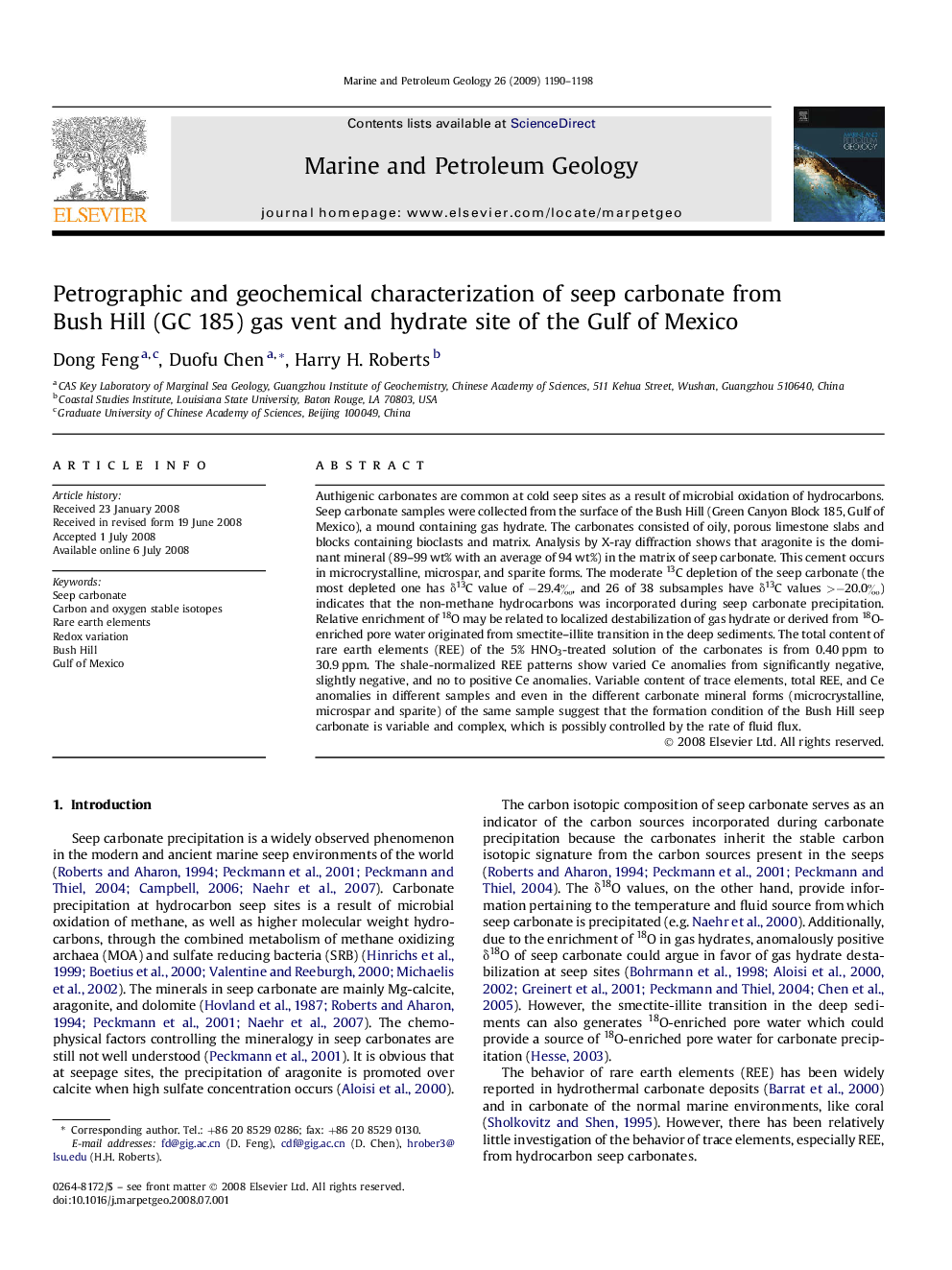| Article ID | Journal | Published Year | Pages | File Type |
|---|---|---|---|---|
| 4696288 | Marine and Petroleum Geology | 2009 | 9 Pages |
Authigenic carbonates are common at cold seep sites as a result of microbial oxidation of hydrocarbons. Seep carbonate samples were collected from the surface of the Bush Hill (Green Canyon Block 185, Gulf of Mexico), a mound containing gas hydrate. The carbonates consisted of oily, porous limestone slabs and blocks containing bioclasts and matrix. Analysis by X-ray diffraction shows that aragonite is the dominant mineral (89–99 wt% with an average of 94 wt%) in the matrix of seep carbonate. This cement occurs in microcrystalline, microspar, and sparite forms. The moderate 13C depletion of the seep carbonate (the most depleted one has δ13C value of −29.4‰, and 26 of 38 subsamples have δ13C values >−20.0‰) indicates that the non-methane hydrocarbons was incorporated during seep carbonate precipitation. Relative enrichment of 18O may be related to localized destabilization of gas hydrate or derived from 18O-enriched pore water originated from smectite–illite transition in the deep sediments. The total content of rare earth elements (REE) of the 5% HNO3-treated solution of the carbonates is from 0.40 ppm to 30.9 ppm. The shale-normalized REE patterns show varied Ce anomalies from significantly negative, slightly negative, and no to positive Ce anomalies. Variable content of trace elements, total REE, and Ce anomalies in different samples and even in the different carbonate mineral forms (microcrystalline, microspar and sparite) of the same sample suggest that the formation condition of the Bush Hill seep carbonate is variable and complex, which is possibly controlled by the rate of fluid flux.
